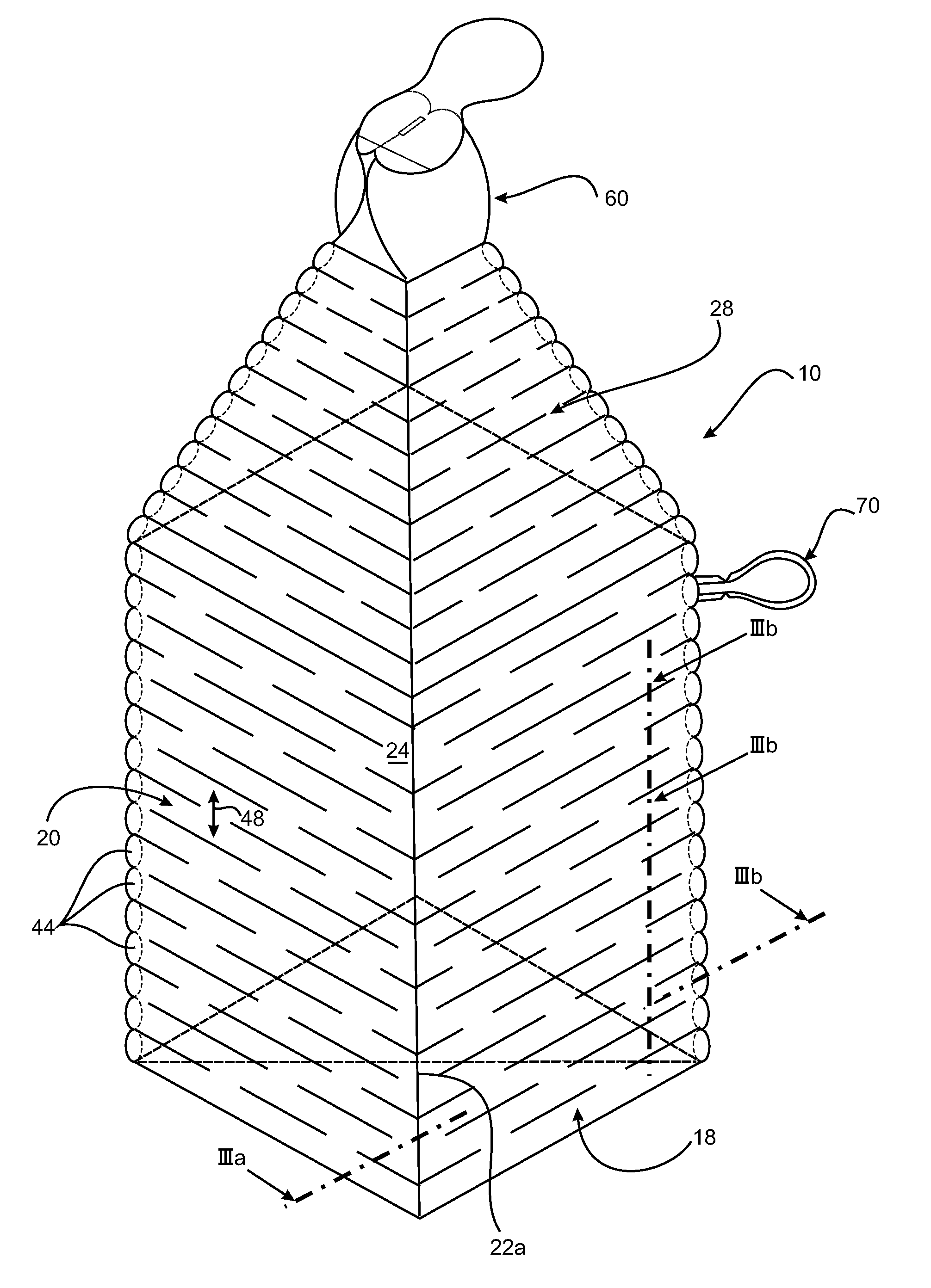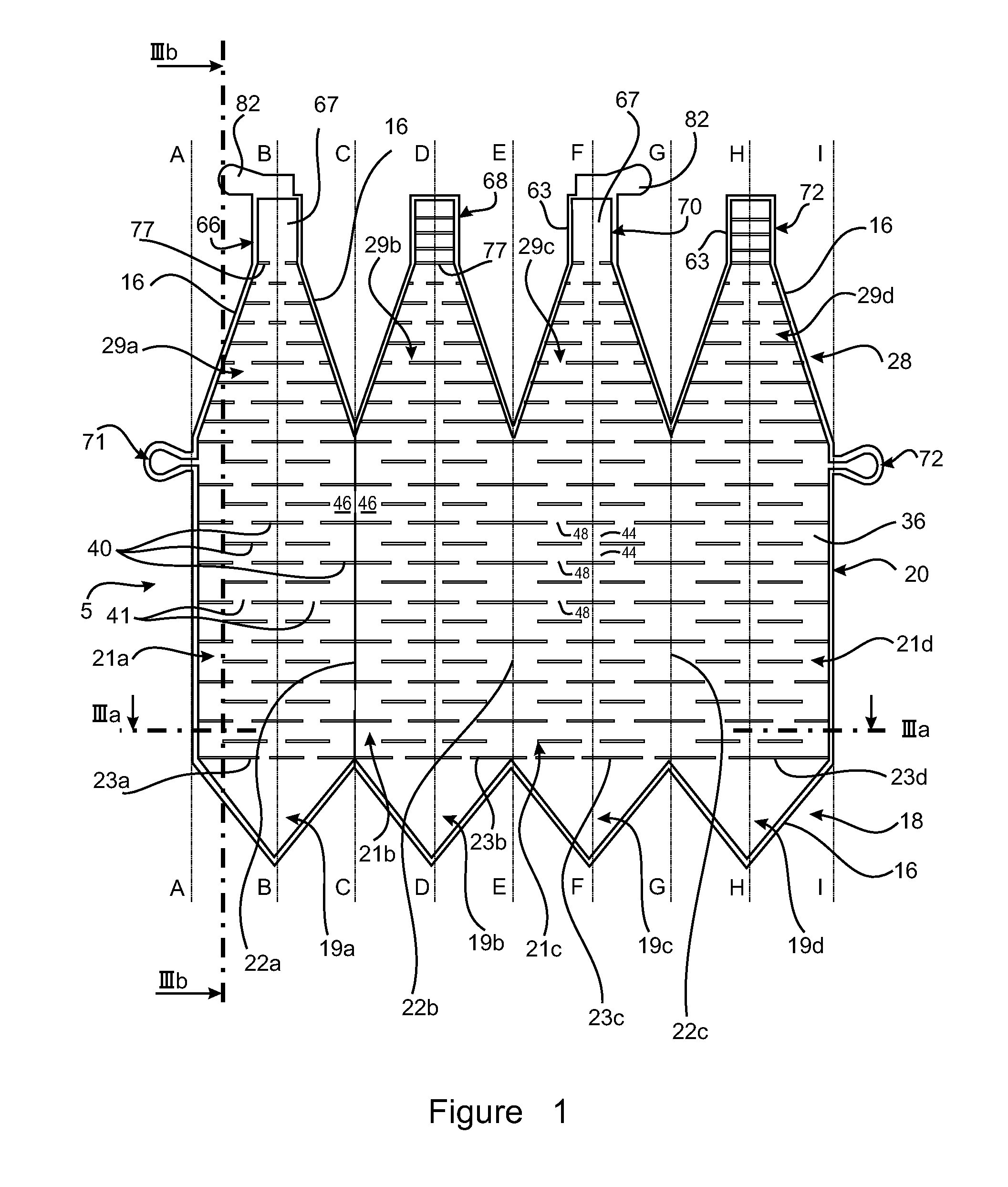Collapsible bottle, method of manufacturing a blank for such bottle and beverage-filled bottle dispensing system
a bottle and blank technology, applied in the field of inflatable, portable containers, can solve the problems of high transportation costs of empty bottles, large physical volume, and high environmental impact of bottled beverage market using rigid or semi-rigid bottles, so as to reduce the cost of transportation and storage of water, facilitate collection and handling, and encourage recycling
- Summary
- Abstract
- Description
- Claims
- Application Information
AI Technical Summary
Benefits of technology
Problems solved by technology
Method used
Image
Examples
Embodiment Construction
[0072]Turning first to FIGS. 1 and 2, FIG. 1 shows a plan view of a double-skinned blank 5 which after further folding and selectively edge-bonding at specific perimeter locations of the blank 5, as explained below, is transformed / shaped into an inflatable bottle blank which in turn can then be inflated into a deployed state as is schematically illustrated in the simplified isometric depiction of bottle 10 in FIG. 2. The different stages of manufacturing the blank 5 of FIG. 1, the folded and bonded bottle blank (not shown) and subsequent filling operations to inflate the collapsible double-skinned walls of the bottle 10 to make same a relatively shape stable and rigid bottle (as per FIG. 2) and to fill the bottle itself with a beverage (eg water), will be addressed in turn in the following description.
[0073]The bottle 10 in FIG. 2, shown in inflated state, is of polyhedral configuration, quadrilateral (eg square) in cross-section. It has a square bottom wall 18 (standing base of bot...
PUM
| Property | Measurement | Unit |
|---|---|---|
| filling volumes | aaaaa | aaaaa |
| pressures | aaaaa | aaaaa |
| temperature | aaaaa | aaaaa |
Abstract
Description
Claims
Application Information
 Login to View More
Login to View More - R&D
- Intellectual Property
- Life Sciences
- Materials
- Tech Scout
- Unparalleled Data Quality
- Higher Quality Content
- 60% Fewer Hallucinations
Browse by: Latest US Patents, China's latest patents, Technical Efficacy Thesaurus, Application Domain, Technology Topic, Popular Technical Reports.
© 2025 PatSnap. All rights reserved.Legal|Privacy policy|Modern Slavery Act Transparency Statement|Sitemap|About US| Contact US: help@patsnap.com



